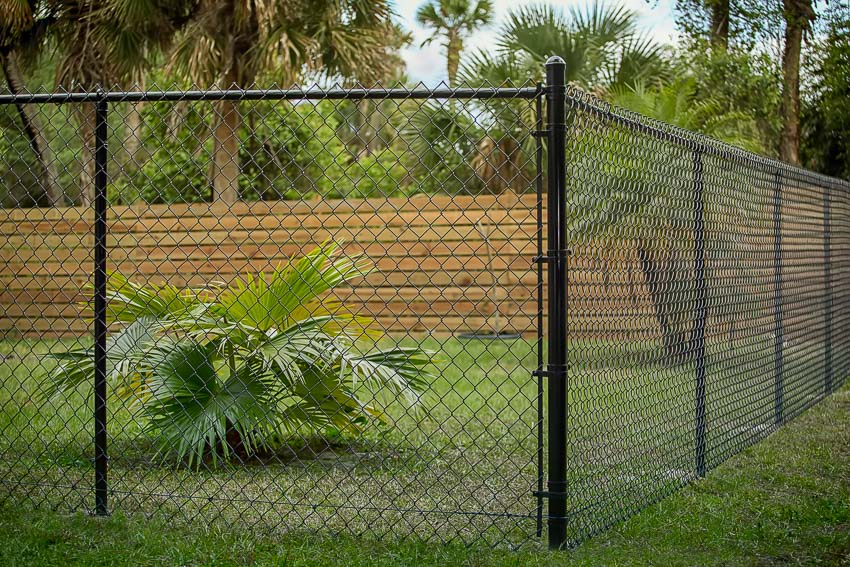Chain link fences are among the most popular choices because they are practical, versatile, and cost-effective. The first step in building any fence is choosing the best material for your purpose. Learn more about the benefits and cost advantages of chain link fencing to help you decide if it’s right for you.
What is a Chain Link Fence? A Practical Choice
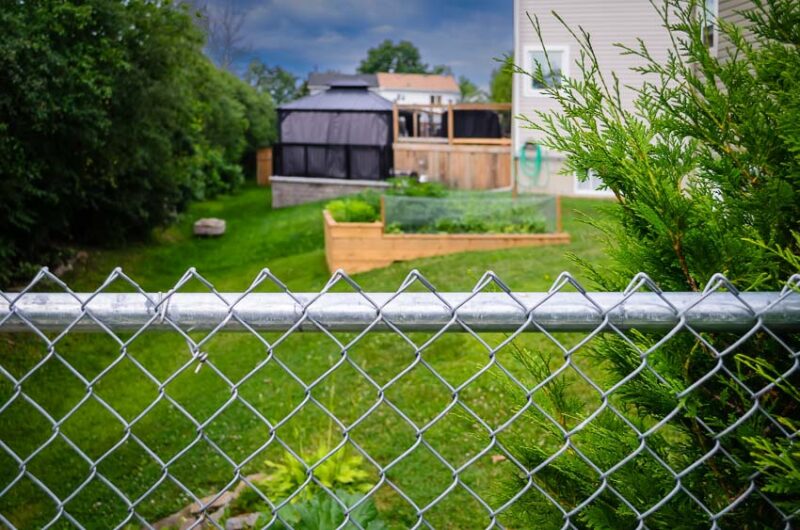
Chain link fences are one of the oldest types of fences. They were invented in 1844 by a British man named Charles Barnard , who used cloth weaving as inspiration to develop a woven wire mesh fence that is both durable and strong.
Even though chain link isn’t the most stylish fence available, it’s a practical choice for several purposes. It’s easy to install and maintain and one of the least expensive fencing materials, making it an excellent choice when working with a tight budget. Traditional chain link fencing is galvanized, but you can find other popular finishes, such as black chain link fence.
The Basics of Chain Link Fencing
Made of woven steel wire to keep your home or business secure, chain link fences are often the best choice for people with children and pets. Not only are they a budget-friendly option that’s inexpensive to install, but they are also easy to maintain, so you’ll save money on fencing costs in the long term.
Key Components and Materials
Chain link fences are made with wire fence fabric stretched and attached to a framework consisting of line posts, terminal posts, and top rails. Most components are made with galvanized steel, which is strong and durable.
It’s helpful to understand the parts of a chain link fence when installing and repairing them. Here’s a complete breakdown of chain link fence parts:
| Chain link fence component | Purpose |
| Fabric mesh | The fabric mesh for residential chain link fences comes in standard heights of 3, 3 ½, 4, 5, and 6 feet, but it’s also available in heights up to 20 feet. |
| Terminal post | The terminal posts support the fence’s structure and are used at the corners, ends, and gate openings. |
| Terminal post cap | Each terminal post needs an end cap different from line post caps. |
| Line post | Most chain link fence posts are line posts. You should use one every 10 feet. |
| Line post cap | Line post caps hold the top rail in place and can be customized for a unique look. |
| Top rail | The top rail runs along the top of the posts and links them together, helping to hold the fence fabric to the framework. |
| Rail end cap | Every end of the top rail must be capped. |
| Tension bar | The tension bar is a vertical bar woven into the fence fabric. You need one at each end, gate, and corner post. |
| Tension bands | The tension bands hold the tension bar to the terminal posts. So the taller your fence, the more tension bands you need. |
| Tension wire | The tension wire runs along the bottom of the chain link fence and keeps the mesh fabric taut. |
| Tie wires | The tie wires hold the fence to the top rail and line posts. They are spaced every 24 inches on the top rail and every 12 inches on line posts. |
| Other fittings | Fittings include all the metal parts used to connect and hold the fence fabric and posts together. In addition to the tension bands and tie wires, other fittings include gate hinges and latches. |
| Gates | Gates are available in various heights and widths, usually starting at 3’ x 3’. You can also choose different sizes of driveway gates. |
Common Chain Link Fence Styles and Applications
Chain link fences come in various styles, and they are available for residential, commercial, and industrial use.
Types of residential chain link fence styles
You can change the style of a residential fence by choosing different options in the following categories:
- Wire size
- Mesh hole size
- Height
- Coating
- Colors
Commercial and industrial chain link applications
People often use chain link fences in commercial and industrial settings because they are easy to install and cost-effective. They also serve a variety of purposes and can be used in the following applications:
- Provide security for people and materials
- Define borders and property lines
- Border sports fields and create backstops on ballfields
- Confine people in prisons and medical treatment centers
- Control access to schools and industrial sites
Cost of Chain Link Fencing: A Budget-Friendly Option
Most people spend between $1,300 and $3,500 on a chain link fence, making them a budget-friendly fencing option. Installing a chain link fence costs about $10 to $20 per linear foot.
Several factors influence the actual cost of a chain link fence, including materials, installation, and customization features.
Material and Production Costs
When most people think of chain link fences, they think of the old gray galvanized style. Today, you have more options with chain link fences than ever, but different styles can increase the cost of your fence.
Here are the most common chain link fence cost factors:
- Gauge–the thickness of the wire mesh fabric
- Grade of the framework–choose between residential, industrial, and commercial-grade frameworks
- Finish–choose between galvanized and colored finishes, usually black, brown, and green
- Height of fence–the most common fencing height options are 3, 3 ½, 4, 5, and 6 feet
- Gates–the wider and taller your entry gate, the more it will cost
- Number of terminal posts–terminal posts cost more than line posts, but you need two for every gate and one at each end and corner
Installation Costs and Labor Considerations
Most professional fence installations cost about $1,000 to $3,000, with installers charging about $25 to $50 per hour.
Here are some factors that influence the labor and installation costs of chain link fences:
- Size of your fence, including length and height
- The spacing of fence posts
- The layout of your fence
- Soil conditions
- The terrain
- The regional labor market
- Landscaping obstructions that could require tree, shrub, or stump removal
- Grading or leveling the ground
One of the biggest advantages of chain link fences is that they are DIY friendly, and you can save thousands of dollars by installing your own fence.
Customization and Add-on Features
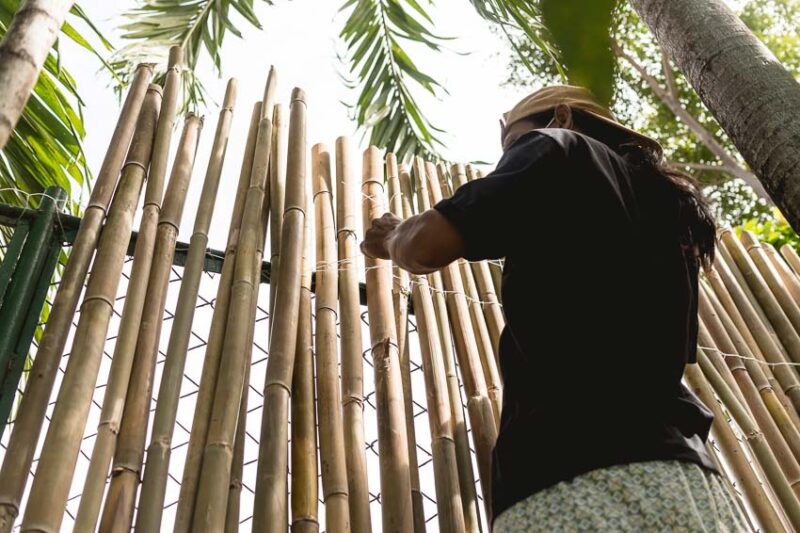
You can customize chain link fences for residential, commercial, and industrial use. In addition to choosing custom heights, colors, and finishes, you can use add-on features like these to make chain link fences more attractive, private, and secure.
- Privacy slats are one of the most common add-on features, usually made from vinyl or wood.
- Bamboo privacy screens can create a new look with chain link fences.
- Fabric or polyethylene screens for chain link fences are a great way to get privacy.
- Gates for driveways can be added to your chain link fence.
- Barbed wire can be installed at the top of a chain link fence to make it more secure.
- Climbing vines and garden vegetables can be trained to grow on chain link fences, making them more aesthetically pleasing.
- Post caps come in various styles and colors, including fence post caps with solar lights.
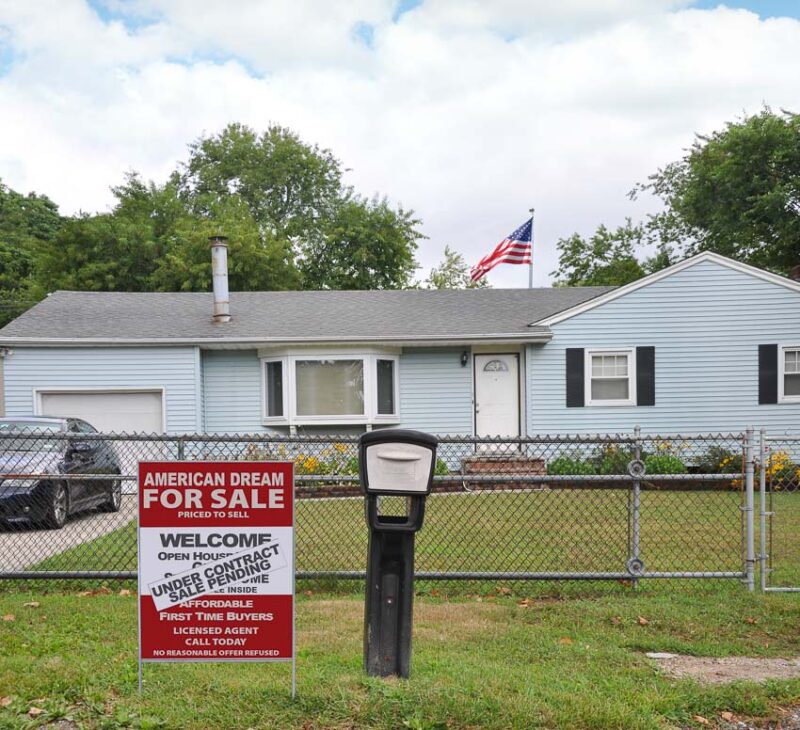
Additional features will increase the cost of your chain link fence, but they can vastly improve the aesthetic value of your property and make it more secure.
Maintenance and Repair Expenses
Chain link fences are durable and can last up to 20 years when maintained properly. But, just like with installation, when it comes to repairs and maintenance, chain link fences are DIY friendly, and you can save money by making your own repairs.
Vehicle collisions, falling trees, and pets trying to escape are the most common causes of damage to chain link fences. On average, people spend about $500 having chain link fences repaired, but the price will vary with factors like how much fence needs to be repaired, the height of your fence, and the type of repair.
Here is a list of common repair issues homeowners may face with chain link fences:
- Leaning or loose fence posts
- Broken top rails
- Mesh fencing that is damaged or torn
- Gate repairs
- Rusted fencing materials
- Sagging fence fabric
- Dents
- Loose bottoms
Why Choose Chain Link Fencing Over Other Fencing Options?
Choosing the best fence for your yard can be a tough decision to make, but there are numerous reasons to choose a chain link fence. However, before you decide, take a closer look at the benefits of chain link fences.
Wide Range of Applications
Deciding on the right fencing type for your purpose requires a thorough assessment of your reasons for needing a fence.
Most people have more than one reason for needing a fence. Because you can use chain link fences for a wide range of applications, you can often meet all of your fencing needs and stay on budget by choosing this type of fence.
Here are the most common reasons for fences:
- Create privacy.
- Provide safety and security.
- Create a sound barrier.
- Establish property boundaries.
- Enhance landscaping features.
- Create shade.
- Block dust and wind.
- Contain pets and livestock.
With customizations and add-on features, chain link fences can meet several of your fencing needs at a low cost.
Cost-Effectiveness and Affordability
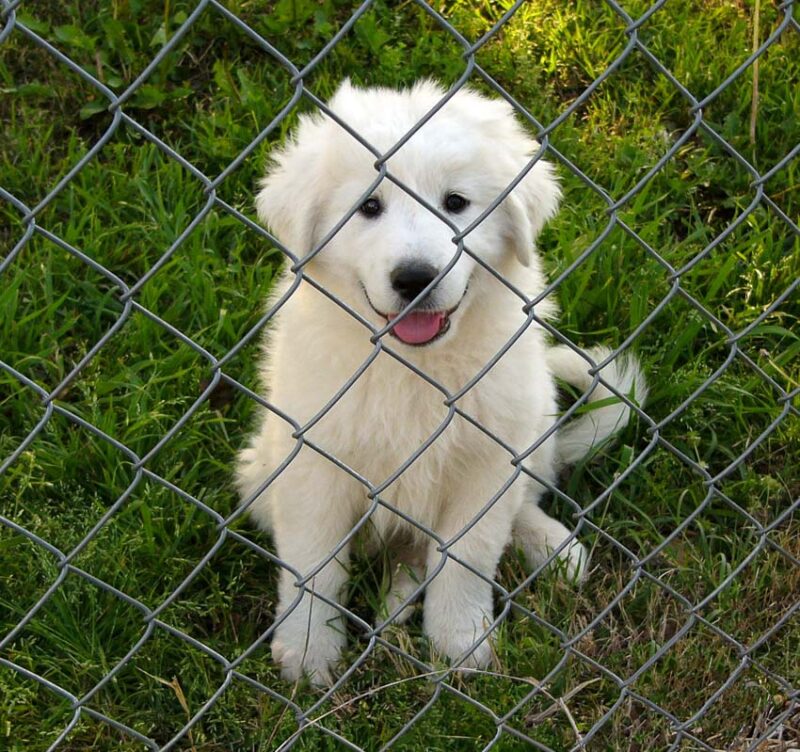
Chain link fences are budget-friendly, and when you’re trying to find an inexpensive option to protect your home and keep your pets and children safe, they are hard to beat. When looking at the affordability of chain link fences, it’s important to consider the low upfront cost of materials.
Chain link fences are easy to install, which translates to lower installation costs, especially if you have the skills for a DIY installation. You can add custom features like privacy screens after you install your fence, which makes it easier to budget and spread the costs out over time.
Durability and Low Maintenance Requirements
The durability and low maintenance requirements of chain link fences are key considerations when budgeting for a new fence. However, they also play a big part in keeping your replacement costs low.
Visibility and Security
Another important benefit of chain link fences is visibility.
While some people feel more secure with a privacy fence, many people like to see what’s on the other side of a fence and know what’s coming. If visibility is important to you, then chain link is an obvious choice.
Security is one of the main reasons people build fences, and chain link fences provide solid security. Even though they aren’t as secure as wrought iron fences, they help keep your home, children, and pets more secure.
FAQ: Frequently Asked Questions About Chain Link Fencing
How much does a chain link fence typically cost?
The average chain link fencing cost per foot is about $10 to $20, including installation, and most people pay between $1,300 and $3,500. The materials, installation, and customization features influence the price of a chain link fence.
What are the main differences between chain link and other fencing options?
Chain link is less expensive and more durable than other fencing options like wood and vinyl. However, it’s not as customizable or attractive as wood.
It’s also less private than vinyl fencing.
How do I maintain and protect my chain link fence from rust and damage?
Pressure wash your chain link fence to keep it looking its best. You should apply a zinc spray coating every five years or so to protect your chain link fence from rust.
While you can’t always protect your chain link fence from accidents and other types of damage, you should maintain it by regularly checking fittings and tightening loose wires.
Can I add privacy to my chain link fence with slats or screens?
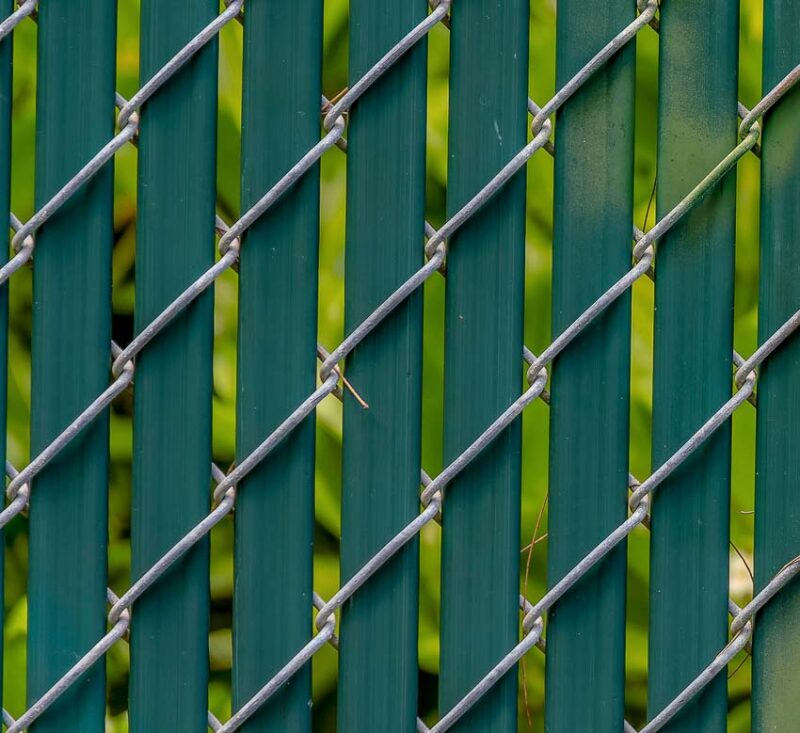
Numerous options are available for making your chain link fence more private, including privacy slats, fabric screens, and bamboo privacy screens.
What is the lifespan of a chain link fence?
The average lifespan of a chain link fence is about 20 years, and with proper maintenance, it can last up to 35 years.

